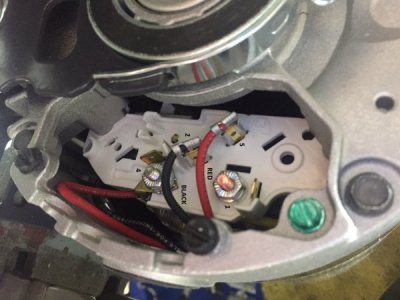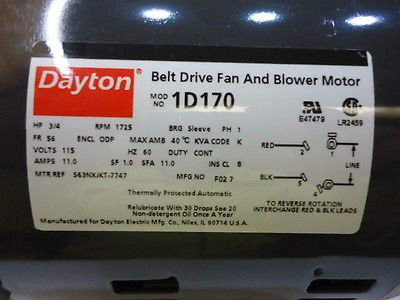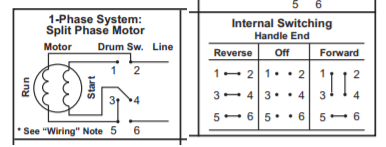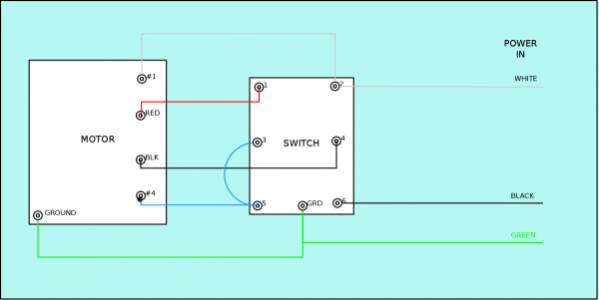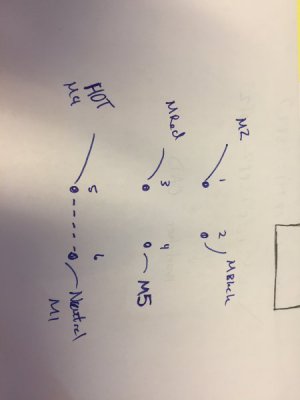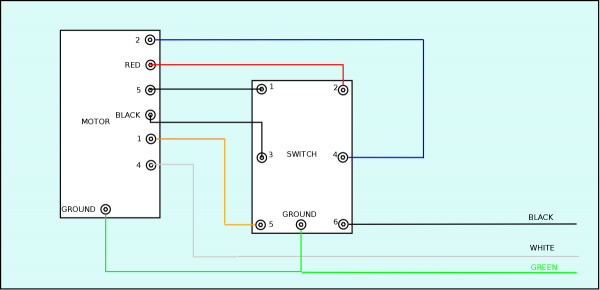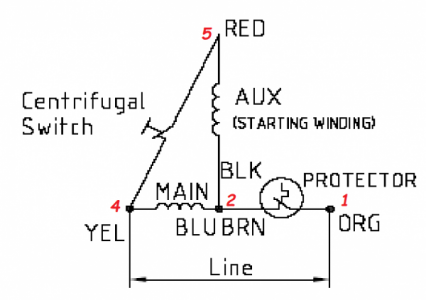All right, lets do this in steps. First off, to make the motor run, period. Leave everything connected by the photo. Take the line cord, (L1=black, L2=white) white to the stud on the motor. Either one, doesn't matter. Splice a wire onto the black wire and run to the switch. Connect the black, L1, to terminal S5 on the switch. Take another wire from terminal S6 back to the motor to the other stud. This is only to make the motor run. Direction is not relevant at this point. Flipping the switch in either direction will cause the motor to run.
Get this right first. Prove the motor is good and the belts are aligned and any other appropriate matter. All of this is working with the assumption there is a metal to metal conection from the frame of the motor to the frame of the switch. There must be a safety ground connection anywhere there is metal. This all ties back to the green wire of the line cord, usually at the motor, or at a terminal box if using one. It has always been my practice to use the extra wire and connect one wire to one terminal so anyone coming later can trace everything easily. Or more importantly, troubleshooting down the road after you have forgotten what was done. It only involves a couple of wires at this point, but makes things easier in the future. There is multi conductor cable available but if nothing else buy a roll of AWG14 white and lable each wire as you work. With THHN, a Sharpie will last long enough. Mark every wire.
Once all this is done, proving the motor &c, we want to make it run in reverse as well as forward. This is where you need another 4 wires. We want to reverse the connection of the start winding, relative to the rest of the motor. Looking at the photo of the motor, it appears that M5=Red and M2=Black. These two connections are the 1/4" staps. What wire goes where inside the motor doesn't matter to us. The manufacturer says to reverse these two to reverse the motor. That is the key phrase.
Refer to my earlier post, where the leads from the two stabs, M2 and M5, run to the switch, S1 and S4. S2 and S3 then run back to the motor, (M)Black and (M)Red. There should be no interconnection between the line, L1 and L2, and the reversing function at M2 and M5 or the (M)Red and (M)Black wires.
I must advise that there are "shortcuts" and wire count reduction methods. There are many possible ways to connect such a reversing switch. There are some involving speeds that even SqD doesn't show. What I've given here is a brute force simple connection for someone not too familiar with electricity. Most of my knowledge is "old school", almost useless in todays world. But old school work still exists with some things. My suggestion would be to assure you have at hand that universal lubricant first.(coffee) Then, and only then, try to figure this out.
